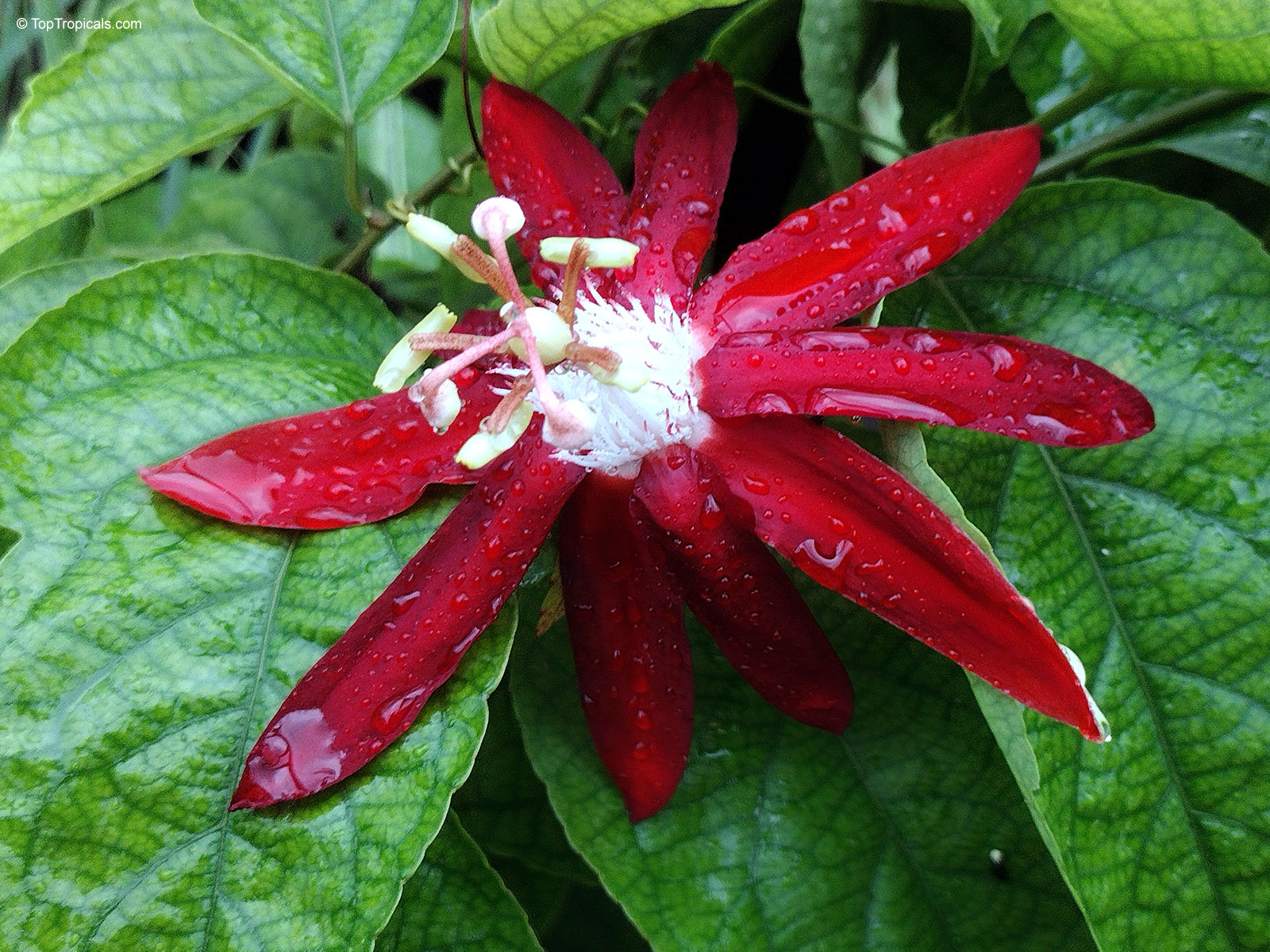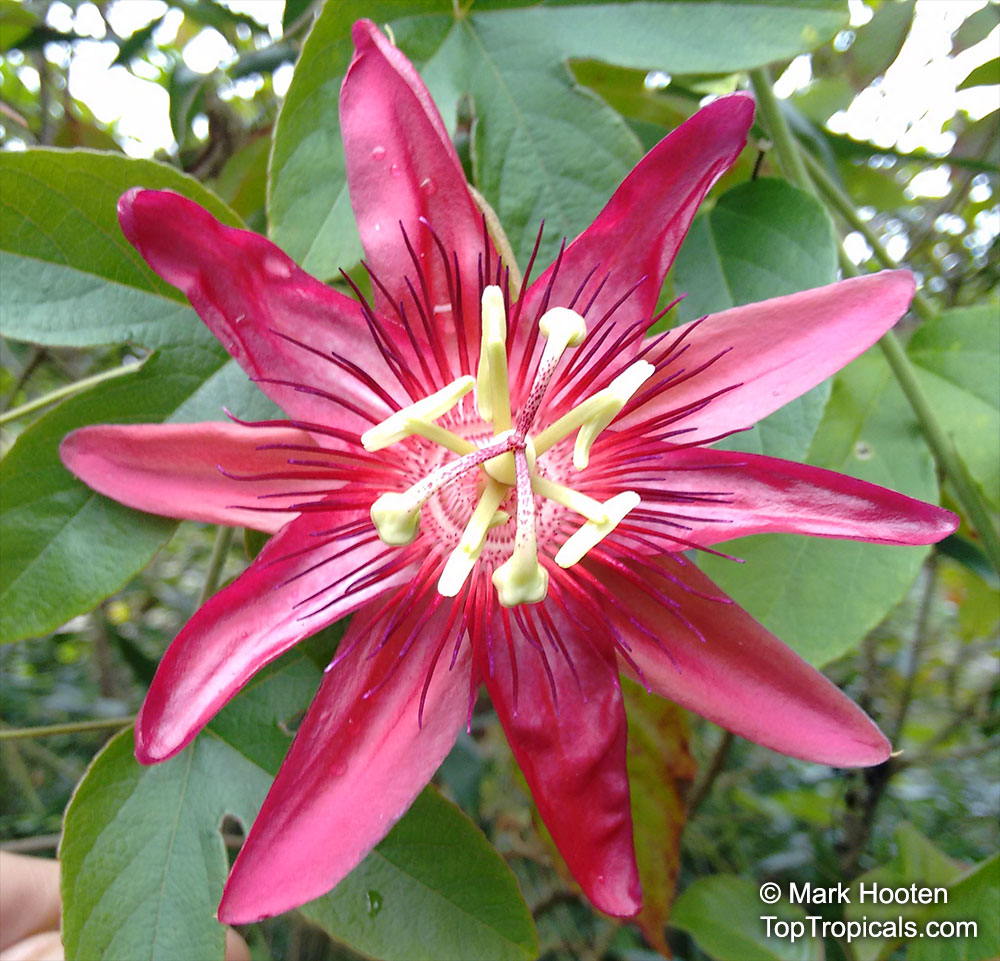Passiflora coccinea (Red Passion Flower)
Top Tropicals Plant Encyclopedia
Botanical name: Passiflora coccinea
Common name: Red Passion Flower
Family: Passifloraceae
Origin: South America
Hardiness: 30°F







Passiflora coccinea is best known for its flowers, which are large, light burgundy-red, with ten petals and a prominent, dark red and white striped corona. The stamens and style and greenish-yellow and stick out prominently. Fruit is edible, but rarely produced.
Passiflora coccinea (Red Passion Flower) is a tropical, tendril-climbing, evergreen vine boasting incredibly showy scarlet-red flowers, 3-4 inches across, adorned with white, purple, and yellow crowns. The ravishing blossoms are followed by egg-size, 2-inch across, edible and tasty passion fruits. They first appear green, striped, and mottled before turning golden yellow when ripe. The foliage consists of single, oblong, medium green leaves which create a perfect backdrop for the flowers.
Red Passion Flower can bloom throughout the year, but its peak season is in summer and fall.
Thrives in full sun or part shade, in fertile, moist, well-drained soils. Water freely when in growth and keep just moist in winter. Provide support for climbing stems and shelter from cold, drying winds. Best flowering occurs in full sun, but this flowering vine tolerates light shade.
Easy to grow, this Passion vine can quickly grow up to 10-12 feet long. Don't try to train your Passion Flower to be too neat and compact. The branches allowed to hang loose and droop a bit will be the ones most inclined to flower.
Excellent choice for trellises, walls, fences, or arbors. Perfect in wall-side borders, city gardens, cottage gardens, Mediterranean gardens, and containers. This trouble-free climber clings with tendrils so won't damage brickwork or fences!
Butterflies and hummingbirds are extraordinarily fond of Passion Flowers.
This vine blooms on new growth and should be pruned in late winter or early spring. No regular pruning is needed. However, trimming may be required to keep it to the space available, removing as much from the longer shoots as necessary.
Close related to Passiflora Lady Margaret and Passiflora vitifolia, but leaves have a different structure (oval rather than divided). The evergreen leaves are obovate in shape and have doubly serrate margins.
Similar plants: Passiflora coccinea (Red Passion Flower)
- Passiflora alata (Winged-Stem Passionflower)
- Passiflora caerulea (Common Passion Flower)
- Passiflora citrina (Yellow Passion Flower)
- Passiflora colinvauxii (Colinvaux's Passion Flower)
- Passiflora coriacea (Wild Sweet Calabash)
- Passiflora edulis (Passion Fruit)
- Passiflora foetida (Wild Maracuja)
- Passiflora incarnata x cincinnata ''Incense'' (Passiflora 'Incense')
- Passiflora lanuginosa (Woolly Passion Flower)
- Passiflora laurifolia (Water lemon)

